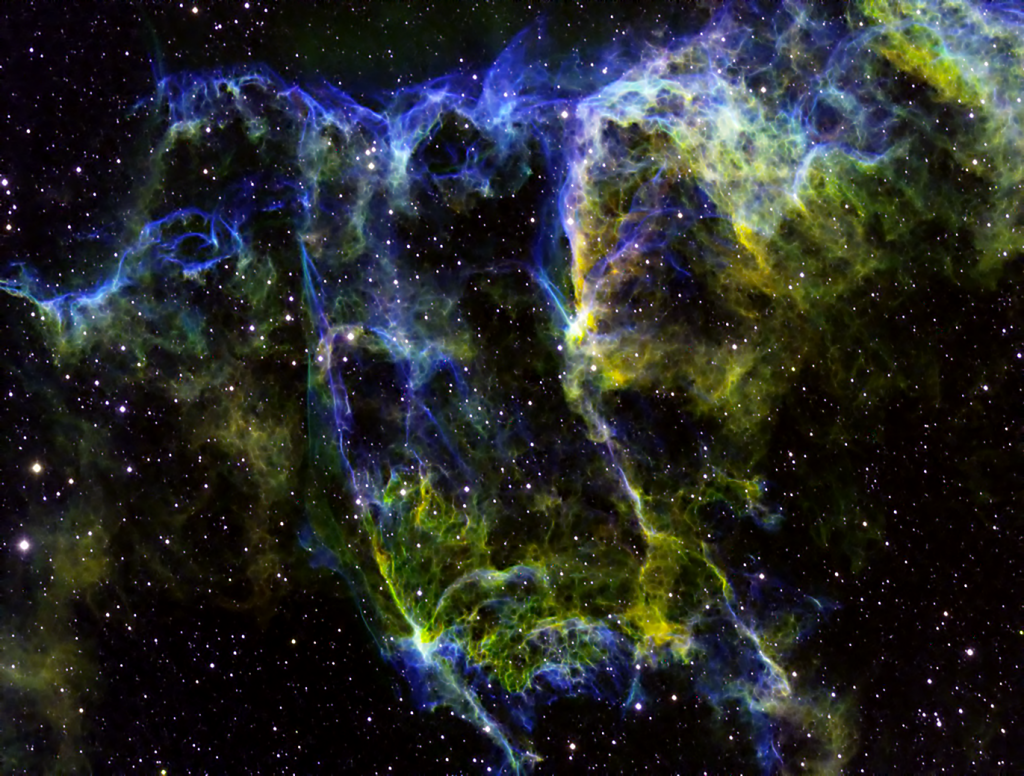
Similar Posts
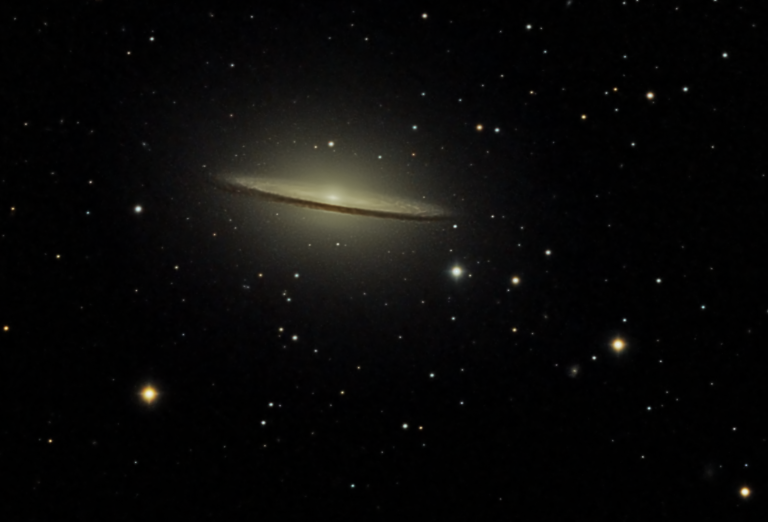
Sombrero Galaxy
M104 is known as the “Sombrero Galaxy” due to its visual appearance – but a deep, long-exposure image reveals its true structure. It’s a lenticular galaxy about 30 million light-years away, about 30% the size of our own Milky Way galaxy.
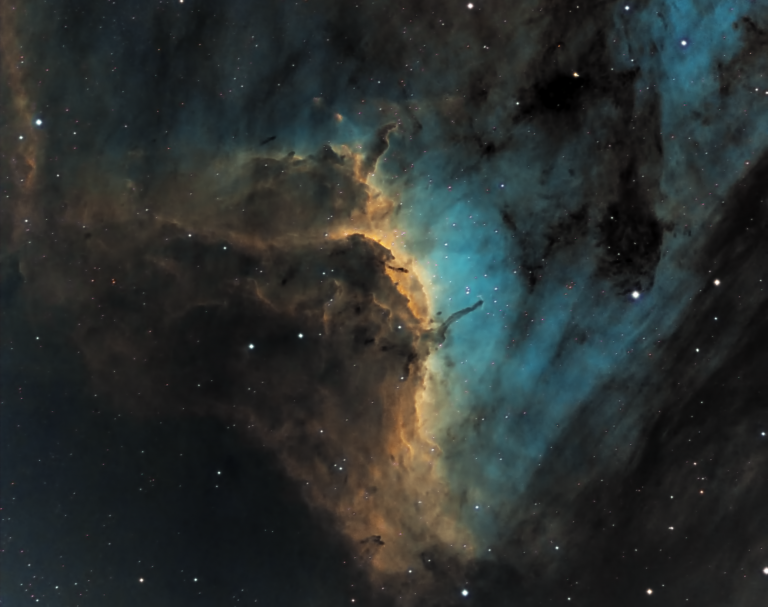
The Pelican Nebula
Granted this is only a portion of it, but for the life of me I don’t see a pelican in this thing. But, it’s still pretty. I processed this object two ways: using the “Hubble palette” that maps red, green, and blue to Sulfur, Hydrogen, and Oxygen emissions (that results in the pretty blue one)…
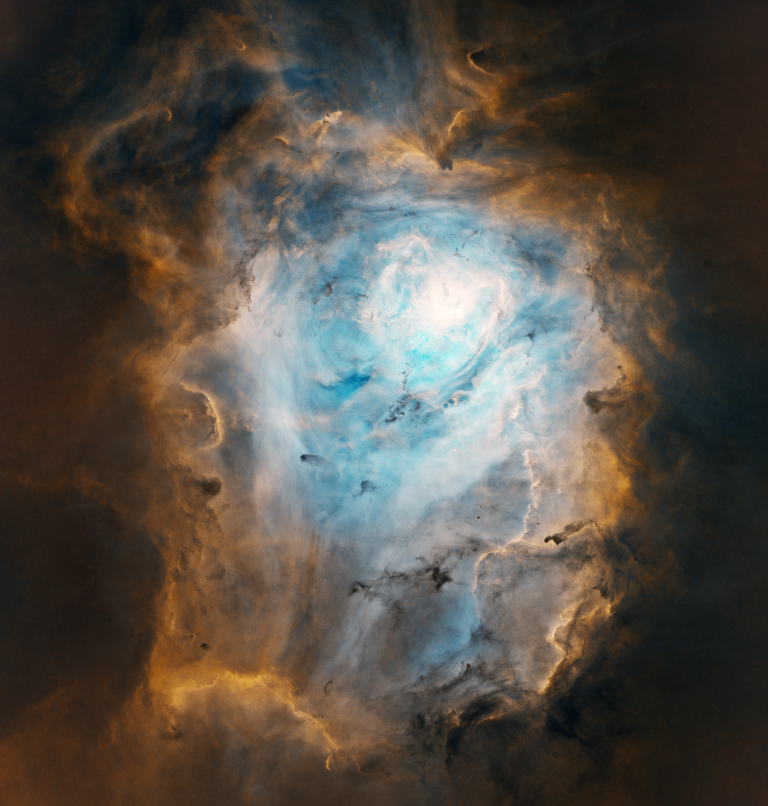
The Lagoon Nebula (M8)
This is a bright, popular nebula deep within the summer Milky Way… but it’s low in the sky, and this is the first time I’ve been able to capture it above the trees. Still, short summer nights and cloudy summer weather present its challenges. Shown processed in the “Hubble palette” and an approximation of its…
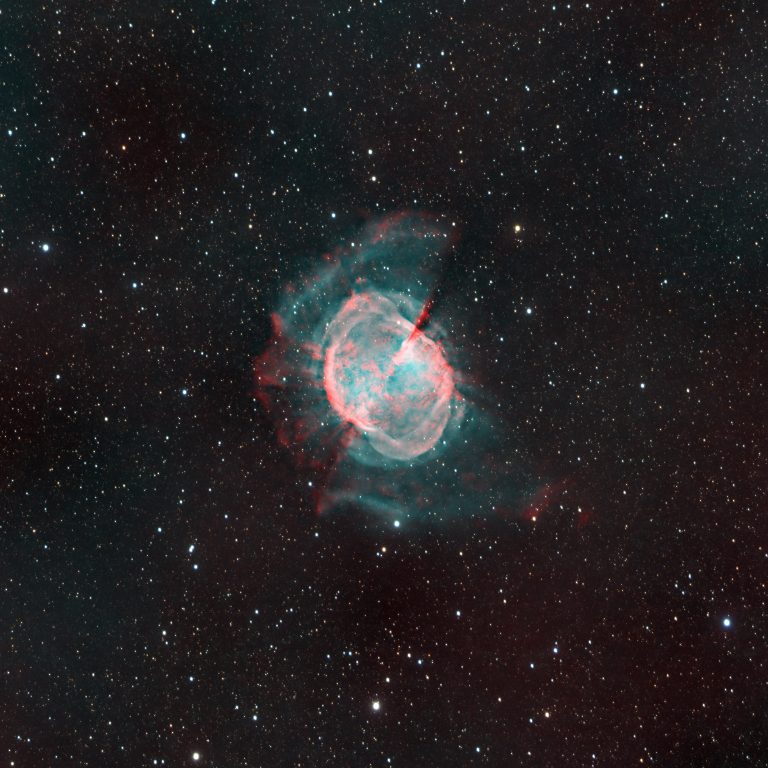
Here’s our solar system in a few billion years.
This is M27, the “Dumbbell Nebula,” about 1600 light-years away. It’s what’s called a planetary nebula – not because it has anything to do with planets, but because early observers confused them for planets. In reality it’s far more interesting. This is what’s left over when a medium-sized star runs out of Hydrogen to fuse,…
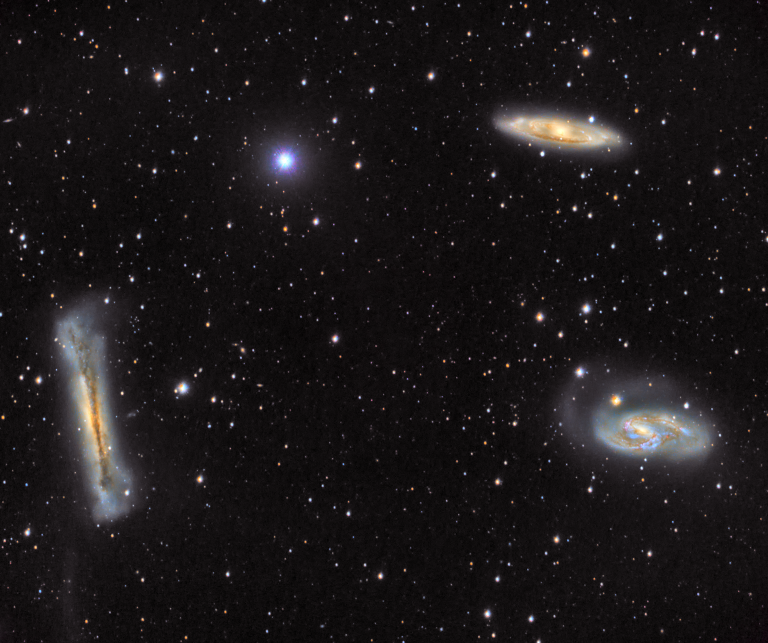
The Leo Trio of Galaxies
The three galaxies in the constellation Leo (M65, M66, and NGC3628) are about 31 million light-years away. Each one is being seen from a different angle; the one viewed edge-on is also known as the “Hamburger Galaxy”. Each has been interacting with each other, and distorting the shapes of these galaxies through the complex dance…
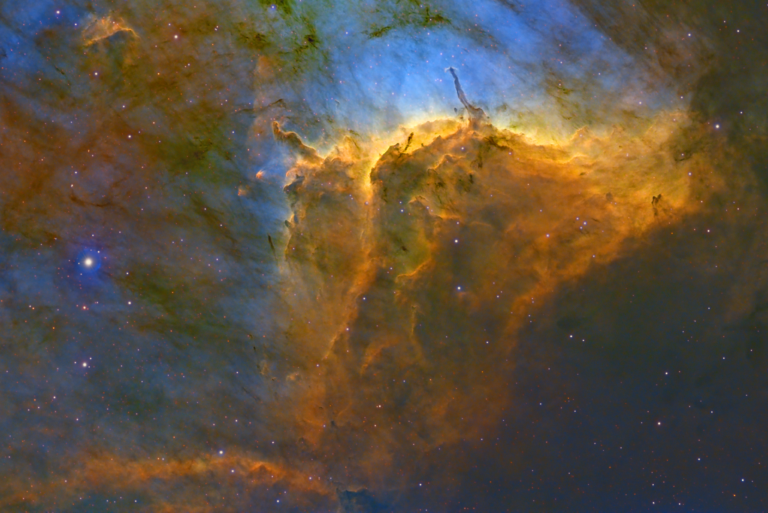
Another Go at the Pelican Nebula
The Pelican Nebula frankly isn’t a very attractive object as a whole, but if you crop it down to its heart, there’s a lot of interesting stuff going on. Look for little puffs in the image, or areas with spikes coming out of them. Those are Herbig-Haro objects – stars that are still in the…

